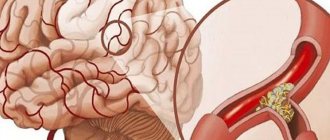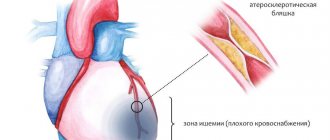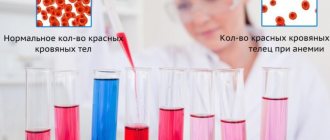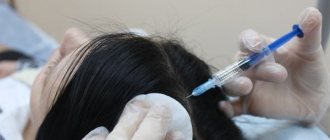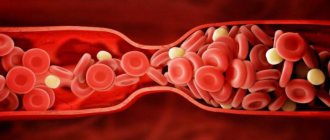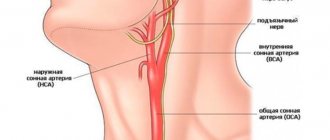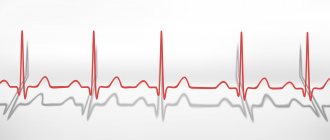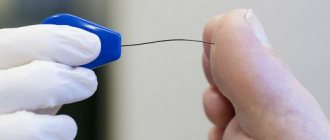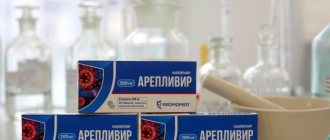Updated: 07/31/2018 11:56:38
*Review of the best according to the editors of expertology.ru. About the selection criteria. This material is subjective in nature, does not constitute advertising and does not serve as a purchase guide. Before purchasing, consultation with a specialist is required.
Varicose veins of the lower extremities, colloquially called varicose veins, are a manifestation of chronic venous insufficiency of the vessels of the legs. This disorder is associated with the development of insufficiency of the valvular system of the veins, which helps lift blood from the bottom up against gravity and return it to the right parts of the heart, which is accompanied by various circulatory disorders, subsequent trophic disorders in the skin and subcutaneous tissue.
Varicose veins are characterized by the gradual occurrence of vein dilation and tortuosity. This pathology is diagnosed in a quarter of the entire adult population. Varicose veins can be considered a female disease, since the number of men is three times less, and this is due to regular fluctuations in hormonal levels and the subsequent onset of menopause. The older the woman, the higher her risk of the disease.
The most common symptoms of varicose veins are swelling in the lower legs, a feeling of heaviness, fatigue and fullness in the legs, especially in the evening. Then a vascular network or stars appear on the skin, which are called telangiectasias, and neurological disorders occur, such as paresthesia: a crawling sensation (formication), numbness and tingling.
Varicose veins are characterized by cramps in the legs, mainly in the calves at night. Subsequently, severe trophic disorders and chronic, non-healing ulcers develop, which lead to disability. The sad result of long-term and untreated varicose veins is acute venous thrombosis, thrombophlebitis, and possibly pulmonary embolism, which can even be the direct cause of death.
Treatment of varicose veins should begin with preventive measures and lifestyle modification, reducing the load on the legs, and with the correct work and rest regime. Currently, there are several groups of drugs that are used to treat chronic venous insufficiency and provide the greatest benefit in the initial stages of the disease. These are phlebotonics, which prevent excessive expansion of veins and disorder of the valve system, these are drugs from the NSAID group, which reduce the symptoms of secondary inflammation, these are drugs that affect blood vessels and reduce the permeability of their walls, and other drugs for varicose veins.
This rating includes representatives of groups of drugs for the treatment of varicose veins, which have long been successfully used at various stages of the disease, and, in combination with non-drug methods of treatment and prevention, can lead to stabilization of the condition, and even to the recovery of the patient without the need for surgical intervention. The ranking opens with drugs from the group of venotonics.
Drugs for the treatment of blood vessels: which ones to choose?
The variety of means for the treatment and prevention of varicose veins often leads to the fact that a person is lost and does not know which drug is best to choose. Without a doubt, any medicine must be prescribed by a doctor, and in the case of varicose veins, consultation with a specialist is simply necessary. In this case, the doctor must be informed about all medications taken at the time of treatment so that he can prescribe adequate treatment, taking into account the preservation of the therapeutic effect of all medications simultaneously taken by the patient.
According to Russian and European phlebological standards, systemic treatment of varicose veins requires an integrated approach, which was already mentioned above in the article.
- Venotonic effect . Makes it possible to combat the incompetence of the valvular apparatus of blood vessels. Normally, blood moves through the vessels of the legs from bottom to top - against the force of gravity. This occurs due to the contraction of the calf muscles during movement and physical activity, as well as due to the presence of special valves on the inner surface of the vein wall, which prevent the reverse flow of blood. However, under the influence of various kinds of provoking factors, the valves weaken and begin to let blood through in the opposite direction. As a result, excess blood volume accumulates in the superficial veins, which leads to a gradual stretching of their walls.
- Angioprotective effect. Aimed at strengthening the stretched walls of blood vessels - restoring their firmness and elasticity. Under the pressure of venous reflux (pathological discharge of blood from top to bottom), blood stagnates in the veins, the walls of the vessels become thinner and the fluid is able to penetrate into neighboring tissues. Swelling occurs, which, in turn, leads to impaired trophism.
- Antiplatelet effect . Aimed at combating trophic disorders and restoring rheological parameters of the blood (reducing its viscosity and the risk of blood clots). So-called thick blood is a very common companion to the disease, because varicose veins themselves are not so dangerous as the venous thrombosis that appears against its background. Disruption of blood flow contributes to the accumulation of metabolic products in small blood vessels, this causes blood thickening and provokes the appearance of free radicals and mediators of the inflammatory reaction. All these factors in combination worsen the fluidity of the blood and lead to its thickening.
Ideally, a systemic venotonic drug should work simultaneously in all directions to achieve the best effect without taking additional drugs. As a rule, this advantage also provides a more compact course of treatment (since it acts on all aspects of the varicose vein problem at once) and good cost savings.
Rating of the best remedies for varicose veins (creams, ointments, tablets)
| Nomination | place | Name of product | price |
| The best phlebotonics, or venotonic drugs | 1 | Detralex (Venarus, Phlebaven, Phlebodios) | 633 ₽ |
| 2 | Venoplant (Aescin, Aescusan) | 425 ₽ | |
| 3 | Venoruton (rutoside) | 128 ₽ | |
| 4 | Glivenol (tribenoside) | 439 ₽ | |
| The best non-steroidal anti-inflammatory drugs (NSAIDs) for varicose veins | 1 | Diclofenac (Voltaren) | 202 ₽ |
| 2 | Movalis, Amelotex, Mirlox, Movasin, Revmart, Flexibon, Artrosan (meloxicam) | 687 ₽ | |
| 3 | Ketonal (ketoprofen) | 118 ₽ | |
| The best anticoagulants and antiplatelet agents for varicose veins | 1 | Cardiomagnyl (ASA) | 142 ₽ |
| 2 | Curantyl (dipyridamole) | 608 ₽ | |
| 3 | Trental 400 (pentoxifylline) | 658 ₽ |
Surgical intervention
Lifestyle changes, proper nutrition and medications can slow down the development of varicose veins, but do not change already dilated veins. Surgery is considered the most effective means of combating the disease. Many types of surgery are performed within one day.
- Phlebectomy
- removal of the saphenous veins. Performs within a couple of hours, but has a chance of leaving scars. - Miniphlebectomy
- removal of veins through small punctures. - Stripping
- surgery on the great saphenous vein: it is removed using a special probe. - Endovasal laser coagulation
is a method with growing popularity. Under the influence of the laser, the walls of the vein stick together, and the vessel gradually resolves without a scar. Percutaneous laser coagulation is also possible.
All types of operations help to completely eliminate the affected veins, which with modern treatment improves the appearance of the legs and reduces the risk of complications. After such treatment, you should resort to prophylaxis so that the disease does not return. Even the best treatment does not exclude the new development of varicose veins without lifestyle changes.
The best non-steroidal anti-inflammatory drugs (NSAIDs) for varicose veins
All non-steroidal anti-inflammatory drugs, the simplest representative of which is the usual acetylsalicylic acid, or aspirin, help reduce the symptoms of inflammation, relieve pain, and relieve symptoms of fever - help reduce high temperatures. But not all representatives of this group express these abilities in the same way. For the treatment of chronic venous insufficiency, mainly those representatives of NSAIDs are used that are maximally capable of reducing inflammation, that is, relieving swelling, pain, redness and a feeling of local heat as varicose veins progress.
The general condition for taking these drugs is the need for short courses. Even during an exacerbation, it is not recommended to use these drugs for more than a week. In the first 2-3 days, if the symptoms are particularly pronounced, you can use the drug in the form of intramuscular injections, and then switch to tablet forms. All NSAIDs, to varying degrees, can cause exacerbation of gastric and duodenal ulcers, promote ulcer formation in the gastrointestinal tract, or have an ulcerogenic effect. Of course, modern drugs are safer, but still, in patients with a history of ulcers or an unfavorable background in relation to the gastrointestinal tract, it is necessary to use drugs such as omeprazole for prevention when prescribing NSAIDs. That is why their use must be approved by the attending physician. Let's consider the most effective remedies that are included in the rating of drugs for the treatment of varicose veins.
Diclofenac (Voltaren)
Rating: 4.9
Voltaren contains the active ingredient diclofenac sodium. Diclofenac, despite its rather long-standing use in medicine and the smallest safety spectrum, has a very strong anti-inflammatory effect. All NSAID drugs are pathogenetic means of therapy, that is, they affect not only the reduction of the symptoms of varicose veins, but also suppress the mechanism of secondary inflammation. Therefore, Voltaren is used in complicated and advanced stages of the disease. In the initial stages, as a rule, it is not used. One Voltaren tablet contains 50 mg of diclofenac sodium, and is used in short courses, starting with a dosage of one tablet twice a day. In some cases, the dose may be increased, but only on the recommendation of the attending physician. Voltaren is produced by the well-known pharmaceutical company Novartis, and one package of 20 tablets, designed for 10 days of use, costs 230 rubles. The cost of Voltaren ointment (cream) is 589 rubles.
Of course, you can purchase exactly the same package of diclofenac for 31 rubles. produced by the domestic company Hemofarm, but it is left to the patient himself to judge the comparison of the quality and effectiveness of these two drugs included in the rating of remedies for varicose veins.
Advantages and disadvantages
The advantages of Voltaren include its rapid relief of inflammation symptoms; the effect begins within just a few hours. But at the same time, Voltaren is contraindicated in a number of diseases, such as stomach ulcers, bronchial asthma and aspirin intolerance. There is a ban on taking the drug during pregnancy and breastfeeding, there are restrictions on use in cases of liver and kidney dysfunction, and a number of other subtleties, which only a doctor can evaluate and conclude about the need to prescribe this drug.
Movalis, Amelotex, Mirlox, Movasin, Revmart, Flexibon, Artrosan (meloxicam)
Rating: 4.8
Meloxicam is considered a very popular anti-inflammatory drug, which is used in a variety of branches of medicine: in rheumatology, for diseases of the musculoskeletal system, and, including in severe stages of chronic venous insufficiency of the lower extremities. In the retail pharmacy chain you can buy meloxicam, which is produced by many companies, but Movalis is the original drug that first appeared on the market, there is a maximum number of studies on it and an extensive evidence base.
Each tablet contains 15 or 7.5 mg of meloxicam, and this drug has a strong anti-inflammatory effect at all stages of inflammation. Its mechanism is an obstacle to the synthesis of prostaglandins, which, accumulating in the inflammatory focus, lead to redness, pain, swelling and dysfunction. Movalis tablets should be taken in a dosage that does not exceed 15 mg per day for adults. Therefore, it is advisable to divide this dose into 2 equal doses, and it is recommended to use a dosage of 7.5 mg. This remedy is used for a short course, Movalis is produced by the German company Boehringer Ingelheim, and the cost of one package with a dosage of 7.5 mg, number 20, designed for 10 days of use, costs from 550 rubles. The cost of Movalis ointment (cream) is 687 rubles.
Advantages and disadvantages
The advantages of Movalis include a more reliable safety spectrum than Voltaren, since it is a drug for the treatment of varicose veins of the next generation. Movalis acts quickly, and in the complex treatment of progressive venous insufficiency associated with the development of concomitant inflammation, it significantly stops the progression of the process and improves the quality of life. But at the same time, like all NSAIDs, Movalis should be used with extreme caution in patients with diseases of the gastrointestinal tract; it is contraindicated during pregnancy and breastfeeding, with intolerance, with aspirin asthma and with intestinal damage in the form of ulcerative colitis, with cardiac deficiency, and for many other conditions. Therefore, before the first use, you must consult your doctor. Movalis is considered to be a product of a rather high price category, which may complicate its use by wide groups of the population.
Ketonal (ketoprofen)
Rating: 4.7
Ketonal, or ketoprofen, belongs to another family of NSAIDs - propionic acid derivatives, and is considered a close relative of ibuprofen, but of a newer generation. It is available in capsules of 50 mg of active ingredient, or in tablets with twice the dosage. There are also extended-release tablets that affect the body over a longer period of time. They contain 150 mg of ketoprofen.
In addition to the symptoms of active inflammation that occur with the progression of chronic venous insufficiency, and are manifested by varicose dermatitis and more serious symptoms, Ketonal is indicated for many rheumatic lesions, for gout, for diseases of the musculoskeletal system, as well as for the elimination of pain syndrome of various etiologies, for example, headache and toothache.
The maximum dose of ketoprofen should not exceed 200 mg per day, and capsules are usually prescribed, which are used one or two at a time up to 3 times a day. Ketonal is produced in tablets and capsules by the company LEK from Slovenia, and one package of 25 capsules can be purchased for only 84 rubles, which is obviously considered a low price for most Russians. The cost of Ketonal ointment (cream) is 346 rubles.
Advantages and disadvantages
The advantages of ketoprofen include wide availability and low cost, fairly high efficiency, especially in relation to mild and moderate pain. Negative aspects include a slight effect on swelling and a wide range of side effects. Most often they manifest themselves as nausea, vomiting, and pain in the abdominal area. This drug, like other NSAIDs, is contraindicated for exacerbation of gastric and duodenal ulcers, aspirin-induced bronchial asthma, severe pathology of the liver and kidneys, and for many other conditions, including in children under 15 years of age, during breastfeeding and in the third trimester of pregnancy. As with other NSAIDs, the first dose of Ketonal should be prescribed by a doctor.
Chime
The active ingredient dipyridamole belongs to the group of disaggregants. It has a fundamentally different mechanism of action compared to previous drugs. Curantil prevents platelets from sticking together, thereby improving microcirculation. To thin the blood for varicose veins, the drug is used if there have been episodes of thrombosis.
Indications for the use of chimes:
- cerebrovascular accidents,
- microcirculatory changes,
- prevention of PE (pulmonary embolism),
- prevention of recurrent thrombosis,
- treatment of ischemic heart disease, etc.
It cannot be used for:
- diathesis,
- heart attack,
- low blood pressure,
- renal and liver failure,
- the presence of bleeding or its high risk of development,
- aortic stenosis.
For the treatment of varicose veins, curantil is used in a dosage of up to 225 mg/day. The daily amount of the drug is divided into several doses. The required dose is determined by the attending physician depending on blood counts and the somatic general condition of the patient.
"Detralex": how to take?
This drug has long been used to treat varicose veins of the lower extremities. It helps increase the tone and elasticity of the vein walls, and also removes congestion. Take it twice a day, two tablets at a time. The course depends on the severity of the disease. If the disease was detected at the initial stage, then it will be enough to take medicine for the joints of the legs for only 2-3 weeks. If blood clots were detected during the examination, then the duration of treatment should be at least six months. But this issue is discussed with the attending physician.
This drug is contraindicated for use by children and adolescents under 18 years of age, as well as by pregnant women and breastfeeding mothers. Detralex is easily tolerated by the body, but in some cases allergic reactions, dizziness and digestive disorders may occur.
